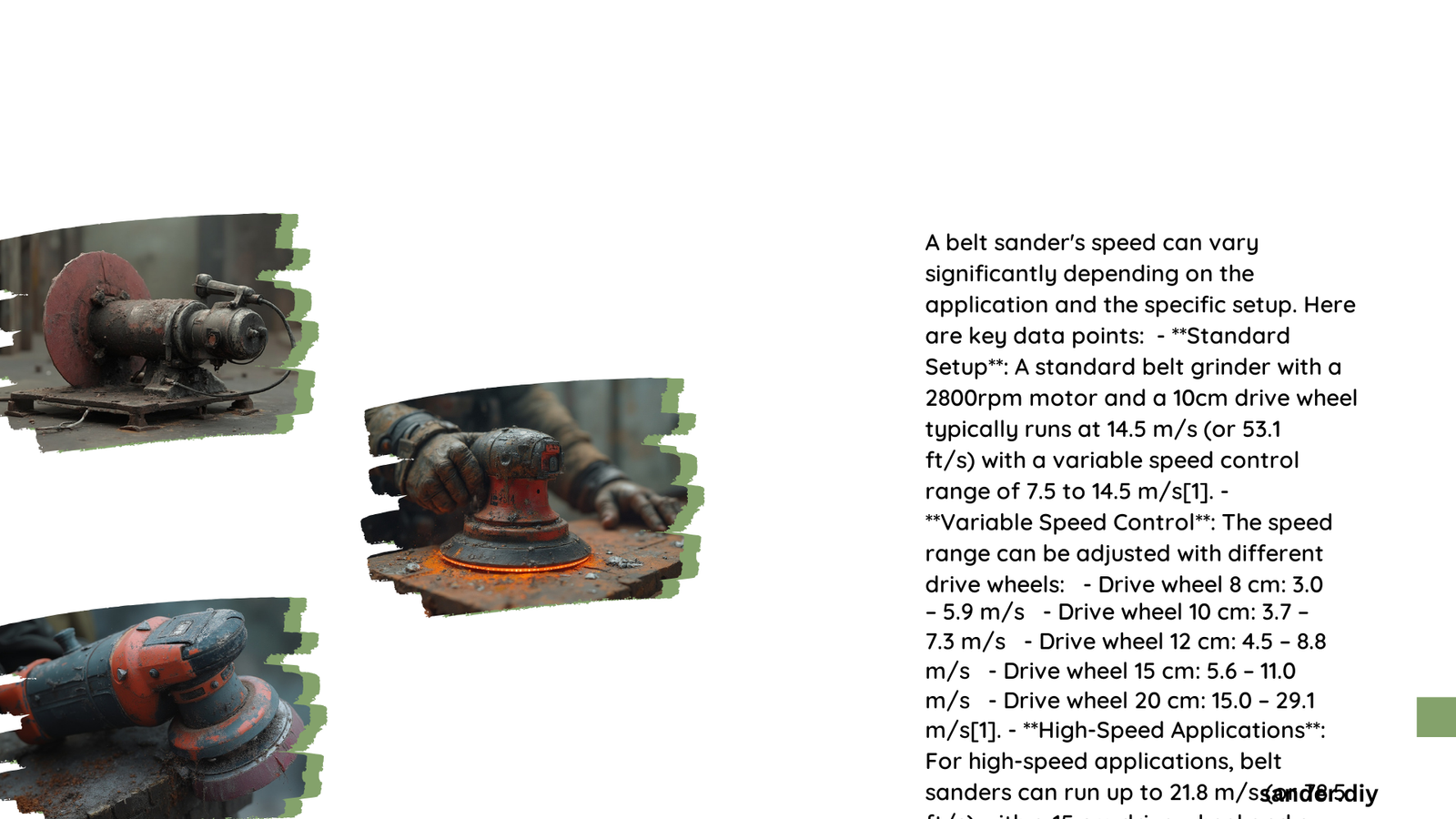Belt sanders are powerful tools that require precise speed management to achieve optimal results across various materials and applications. Understanding how fast a belt sander should operate depends on multiple factors including material type, project complexity, and desired finish quality. The right speed can mean the difference between a professional-grade result and a potentially damaged workpiece.
What Determines Belt Sander Speed?
Belt sander speed is primarily measured in revolutions per minute (RPM) and surface feet per minute (SFPM). Several critical factors influence the ideal speed:
Material Characteristics
- Hardness: Harder materials require different speeds compared to softer materials
- Thickness: Thicker materials might need slower, more controlled speeds
- Composition: Metal, wood, and composite materials have unique speed requirements
Project Specific Speed Ranges
| Material Type | Recommended Speed Range (SFPM) | Typical RPM |
|---|---|---|
| Soft Wood | 1000 – 1500 | 1200 – 1800 |
| Hard Wood | 1500 – 2500 | 1800 – 3000 |
| Metal Grinding | 3000 – 4000 | 2500 – 3500 |
| Precision Work | 700 – 1200 | 900 – 1500 |
How to Calculate Optimal Belt Speed?

Calculating the right belt speed involves understanding several key formulas:
- Basic Speed Calculation:
- SFPM = RPM × 0.262 × Drive Wheel Diameter
-
Example: 1750 RPM × 0.262 × 4 inches = Approximately 1830 SFPM
-
Factors Affecting Speed Selection:
- Motor power
- Belt grit size
- Workpiece material
- Desired surface finish
What Risks Come with Incorrect Belt Sander Speed?
Choosing an inappropriate speed can lead to several potential issues:
- Overheating: Excessive speed generates heat, potentially damaging workpiece
- Surface Damage: Too fast can cause uneven or rough surfaces
- Premature Tool Wear: Incorrect speeds accelerate belt and machine deterioration
- Reduced Precision: Speed inconsistency impacts overall work quality
Best Practices for Belt Sander Speed Management
Recommended Techniques
- Start with lower speeds for initial material assessment
- Gradually increase speed as you understand material response
- Use variable speed settings for complex projects
- Regularly inspect belts for wear and alignment
Safety Considerations
- Always wear protective equipment
- Maintain consistent pressure
- Allow tool and workpiece to cool periodically
- Use dust collection systems
Expert Tips for Optimal Performance
- Wood Projects: Maintain 1500-2500 SFPM
- Metal Grinding: Target 3000-4000 SFPM
- Delicate Materials: Use speeds below 1200 SFPM
- Regular Maintenance: Clean and replace belts frequently
Conclusion
Mastering belt sander speed requires understanding your specific project needs, material characteristics, and tool capabilities. Precision, patience, and practice will help you achieve professional-grade results.
